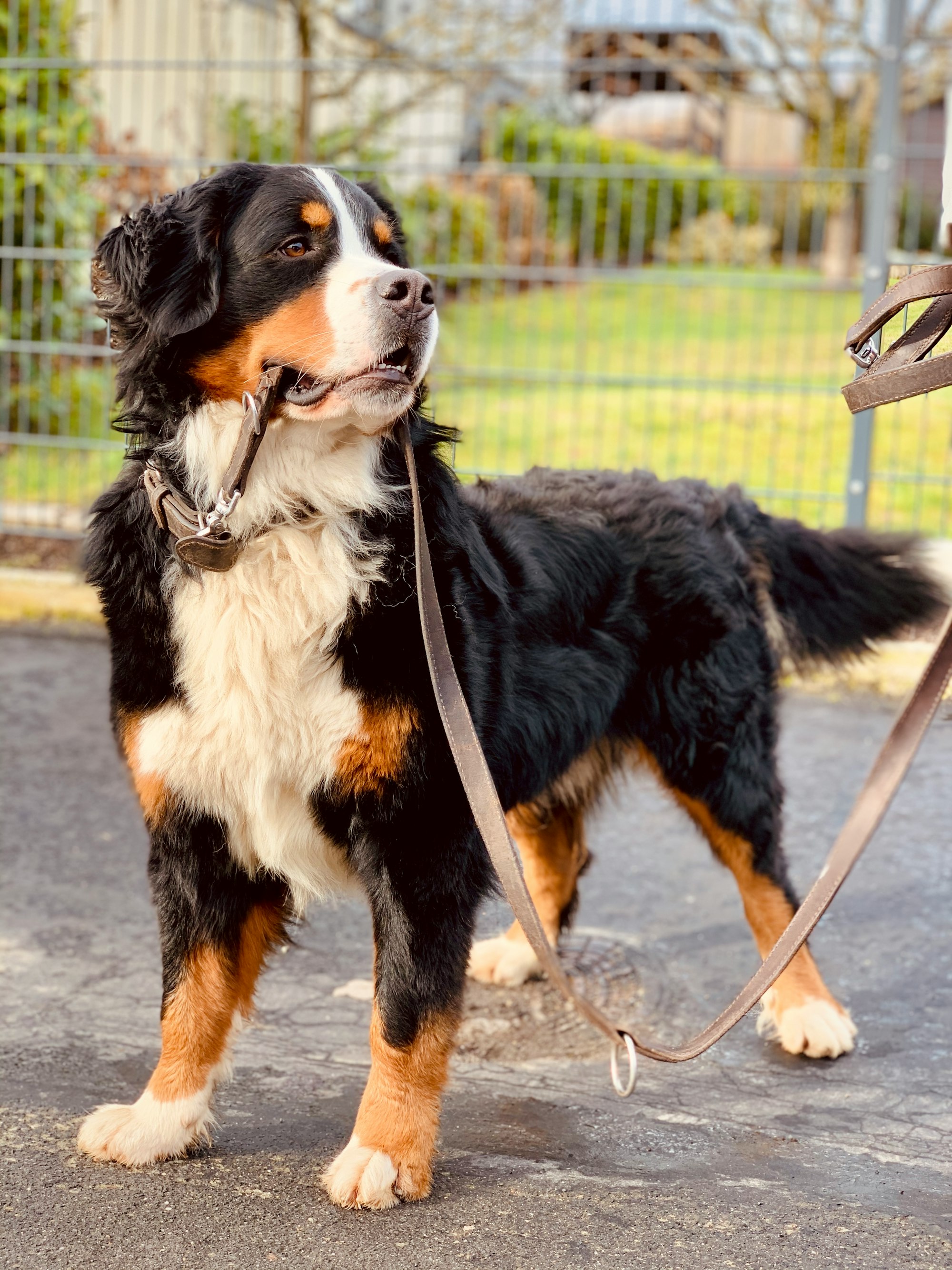Navigating the complexities of dog training can often feel like a considerable challenge, especially when it involves the use of controversial tools like shock collars. A frequently debated topic in the pet care world, these electronic devices, also known as e-collars, are widely used but equally disputed. At the heart of the discussion is understanding the appropriate age to introduce a shock collar to a dog.
However, it's also important to consider alternative, more humane training methods, such as Positive Reinforcement. This comprehensive guide aims to delve into this very issue, shedding light on various factors to contemplate when determining the right age for dog shock collar usage while also emphasizing the potential benefits of Positive Reinforcement.
From understanding the individual dog's maturity level to considering the dog's breed and size, we will delve into the various facets that play a crucial role in shock collar training. Taking a storytelling approach, we will explore real-life scenarios and examples, shedding light on the implications of shock collar usage at different ages. The focus will also extend to the safety aspect of dog training, diving into the shock collar age guidelines that prioritize our canine companion's well-being.
Moreover, as we transition into a digital era, modern alternatives like Fi have revolutionized dog training techniques. We will also explore this high-tech dog collar, comparing its usage and effectiveness with traditional shock collars. So, whether you're a first-time dog owner or a seasoned pet parent seeking insights into dog training tips and the ideal age for dog shock collar use, this detailed guide aims to equip you with valuable knowledge to ensure a positive training experience for your dog.
A Glimpse Into The World Of Shock Collars
Shock collars, also known as electronic collars or e-collars, are widely used in the dog training world. However, their use often stirs debate due to welfare concerns. It's essential to know when and how to use these training tools properly, particularly understanding the ideal age for dog shock collar use.
Deciphering The Ideal Age
Determining the right age to start using a shock collar can be complex. Puppies are highly impressionable and their experiences during formative months can significantly impact their behavior as adults. Therefore, experts often discourage the use of shock collars on puppies. Instead, they suggest waiting until the dog is at least six months old before considering such methods. This recommendation is just a general guideline, as the age can fluctuate based on the dog's size, breed, and temperament.
Importance Of Dog's Maturity
Maturity significantly influences dog training. It's vital to note that a mature dog will react differently to a shock collar compared to a puppy. A fully grown dog, usually around one to two years of age depending on the breed, is more likely to grasp the link between its behavior and the subsequent correction from the shock collar. It's also during this period that understanding elements like "how much exercise" a dog needs becomes crucial, as it contributes to their overall behavior and response to training methods.

Shock Collar Training Age: A Deeper Dive
Training age refers to the age at which a dog is mentally and physically ready to start training with a shock collar. This age is typically around six months but can be as late as one year for larger breeds that mature more slowly. A key indicator of the right training age is when a dog starts to exhibit independence and tests boundaries, similar to teenage behavior in humans.
Canine Behavior And Shock Collars
Understanding canine behavior is a critical step in determining when to introduce a shock collar. Dogs with aggression or fear-based behaviors may react negatively to the use of shock collars. In such cases, alternative training methods, such as positive reinforcement, should be explored. Remember, every dog is unique, and what works for one may not work for another.
The Safety Aspect
Safety should never be compromised when it comes to our beloved pets. Therefore, while considering shock collar training, understanding the safe age for dog shock collar use is paramount. Ensure you consult with a professional trainer or a vet to avoid causing potential harm to your dog.
Training Adult Dogs: Shock Collar
The use of shock collars for adult dogs can be a controversial topic. Although it is typically safer to use these tools on adult dogs, their use should always be a last resort. Ideally, training should start from puppyhood, using positive reinforcement and gentle correction methods. Introducing shock collars should only be an option when these methods are not effective, and always under the guidance of a professional.

The Role Of The Breed
The breed of the dog plays a significant role in determining the ideal age for dog shock collar use. Some breeds mature faster than others, and their response to a shock collar may also vary. Larger breeds usually mature more slowly, meaning the ideal age to introduce a shock collar may be later compared to smaller breeds.
Shock Collar Age Guidelines
While guidelines suggest that six months is the minimum age to introduce a shock collar, these are not set in stone. The individual dog's temperament, behavior, and maturity level should always be taken into account. Consulting a professional can help determine the right time for your specific situation.
Introducing Fi: A Modern Approach To Dog Training
As we delve deeper into the realm of dog training, we cannot ignore the advancements in technology that have revolutionized how we interact with our pets. A great example of this is Fi, a high-tech dog collar that combines GPS tracking with a robust activity monitor.
How Fi Replaces Traditional Shock Collars
Fi is not a shock collar; instead, it uses modern technology to help train your dog in a safe and humane way. Unlike shock collars, Fi uses gentle cues and stimuli to help condition your dog's behavior. It's designed with a keen understanding of dog behavior and training needs, making it a preferred choice for many dog owners.
The Fi Age: When to Introduce Fi to Your Dog
Similar to a shock collar, the ideal age to introduce Fi to your dog can vary. However, since Fi uses a more gentle approach, it can often be introduced earlier. Typically, once a puppy is used to wearing a regular collar, usually around eight to ten weeks, they can start wearing a Fi collar.
The Safety First Approach with Fi
Safety is paramount with Fi. The collar is designed to be as comfortable as possible, with no sharp edges or heavy parts that might hurt your dog. This safety-first approach is one of the many reasons why Fi is rapidly gaining popularity among pet owners and professional trainers.

Training With Fi: A User Experience
Training with Fi is different from traditional shock collar training. With real-time tracking and geo-fencing features, Fi allows dog owners to create a safe zone for their pets. If the dog leaves this area, the owner is alerted immediately, providing peace of mind and a better understanding of their dog's movements and behavior.
The Role Of Breed In Fi Training
Just like with shock collars, the breed of the dog can play a significant role in how effective Fi is as a training tool. However, because of Fi's more intuitive design and features, it tends to be effective across a wider range of breeds compared to traditional shock collars.
Fi: A Revolutionary Step In Dog Training
Embracing Fi signifies a shift in dog training methodologies, leaning towards a more humane, compassionate approach. The device exemplifies how technology can significantly improve the dog-owner relationship, reinforcing the understanding that effective training does not necessitate harsh methods.
In conclusion, understanding the ideal age for introducing different collars to your dog is crucial in ensuring effective training. Whether you're considering a traditional shock collar or a high-tech alternative like Fi, remember that your dog's well-being and comfort should always be the top priority. Research thoroughly, consult with professionals, and choose the best option for your furry friend.
The Future of Dog Training: High-Tech Solutions
As we advance into the digital age, tools such as Fi are becoming more prevalent in dog training circles. They provide a more humane and less intrusive method of keeping track of our dogs and teaching them safe boundaries.
Tech-Based Training: Is it the Answer?
There's no one-size-fits-all answer to dog training. Every dog, like every human, is unique, with their own personality and learning style. High-tech solutions like Fi may not replace traditional training methods entirely, but they certainly provide a valuable tool in the modern dog owner's arsenal.
Responsible Dog Ownership: Understanding Your Role
Dog ownership is not just about training your dog; it's about understanding and meeting their needs. Whether you choose to use a shock collar, Fi, or no collar at all, being a responsible dog owner involves more than just controlling your dog's behavior.
The Golden Rule: Know Your Dog
The key to effective dog training, regardless of the method used, is to understand your dog. Knowing their personality, their fears, their triggers, and their motivations will make you a more effective trainer and a better dog owner.
Final Thoughts: The Ideal Age For Dog Training Tools
Returning to our original topic of understanding the ideal age for using a shock collar on dogs, we can conclude that there's no universally correct answer. Age, maturity, breed, size, and individual temperament all play a role in determining when a dog is ready for a shock collar, or any other training tool for that matter.
Dog Training: A Lifelong Journey
Dog training isn't a one-off event; it's a continuous process that lasts for the dog's entire life. Whether you use a shock collar, Fi, or simple voice commands, remember that training is all about communication. It's a way of understanding and being understood by your canine companion, and it's a journey that, while occasionally challenging, can be immensely rewarding.
In the end, always remember that the safety, health, and happiness of your furry friend should be at the heart of all your training endeavors. Understand your dog, explore your options, and make an informed choice about the best training methods for your unique situation. Happy training!






